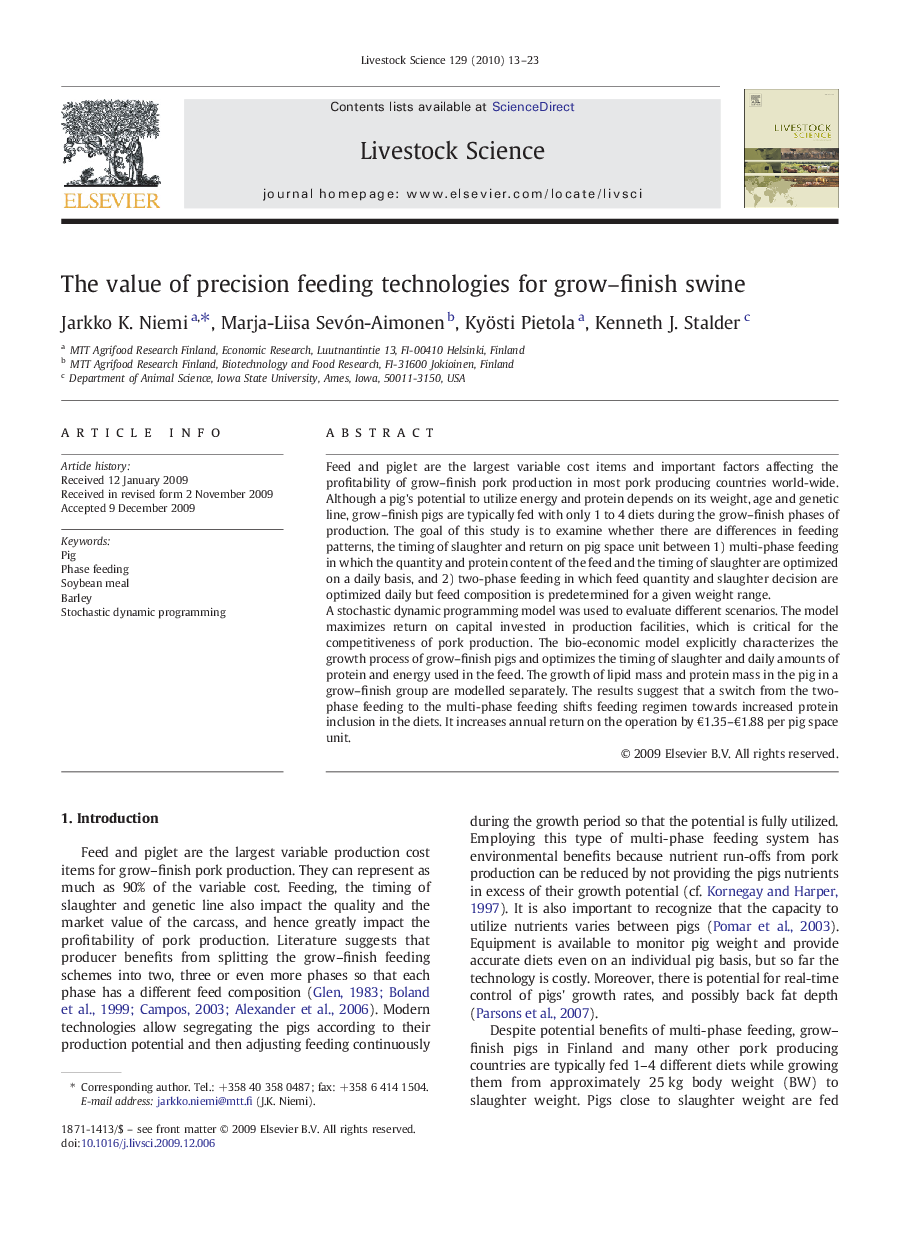| Article ID | Journal | Published Year | Pages | File Type |
|---|---|---|---|---|
| 2447996 | Livestock Science | 2010 | 11 Pages |
Feed and piglet are the largest variable cost items and important factors affecting the profitability of grow–finish pork production in most pork producing countries world-wide. Although a pig's potential to utilize energy and protein depends on its weight, age and genetic line, grow–finish pigs are typically fed with only 1 to 4 diets during the grow–finish phases of production. The goal of this study is to examine whether there are differences in feeding patterns, the timing of slaughter and return on pig space unit between 1) multi-phase feeding in which the quantity and protein content of the feed and the timing of slaughter are optimized on a daily basis, and 2) two-phase feeding in which feed quantity and slaughter decision are optimized daily but feed composition is predetermined for a given weight range.A stochastic dynamic programming model was used to evaluate different scenarios. The model maximizes return on capital invested in production facilities, which is critical for the competitiveness of pork production. The bio-economic model explicitly characterizes the growth process of grow–finish pigs and optimizes the timing of slaughter and daily amounts of protein and energy used in the feed. The growth of lipid mass and protein mass in the pig in a grow–finish group are modelled separately. The results suggest that a switch from the two-phase feeding to the multi-phase feeding shifts feeding regimen towards increased protein inclusion in the diets. It increases annual return on the operation by €1.35–€1.88 per pig space unit.
